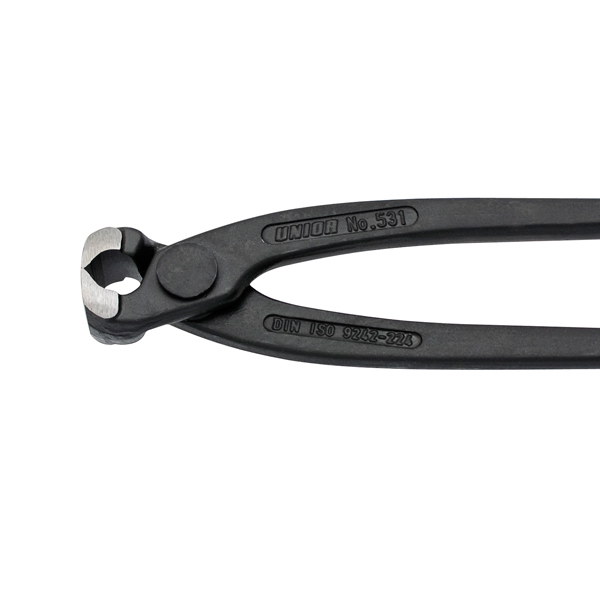Pliers
A special procedure for the manufacture of pliers
Cutting
Cutting material is the first operation in the technological procedure of wrench manufacturing. Optimum design of a cut provides optimal use of material.

Forging
Forging technology at Unior ensures excellent strength characteristics of wrenches. Notably, it maintains appropriate fiber orientation in a forged part, leaving it uninterrupted and the same as in a rolled blank. That characteristic of forged parts is vital for achieving the characteristics of products exposed to heavy and dynamic loads.

Trimming
Excess material is removed from forged parts using a special-purpose tool that trims products along the dividing shape. Some products are also trimmed when hot, thus preventing major mechanical surface deformation on the cut part and providing a quality basis for undisturbed machining.

Joint processing
Using a special-purpose CNC machine, a bore hole is drilled that will serve as the pivot point for pliers. At the same time, the joint is milled and sliding surfaces are made, ensuring precise and undisturbed movement of pliers during use.

Shaping the head part of pliers
Using a special-purpose trimming tool with linear movement, complex surfaces of pliers are shaped. That operation includes the shaping of external radii of the joint and teeth on the jaw used to grip various shapes.
Milling the cutting edges
A special-purpose CNC machine is used for making cutting edges, thus giving pliers the relevant functionality. Important elements are the angle of a cutting edge and the thickness of the edge top. Optimum and accurate machining of cutting edges gives pliers the properties required to cut wire.
Riveting
Pliers are assembled and riveted together with a rivet. At that stage, it is important to ensure that the joint is firm enough, while still allowing the jaws to move freely, but with no slack.

Machining the head part of pliers
At that stage, the surface of pliers is evened to remove any differences in height that might appear as a result of thickness tolerance margins when making a forged part or during further machining, including riveting.
Shaping
Using a tape grinding machine, the remaining untreated surfaces are ground to create better quality surfaces than can be achieved in the forging process. The pliers now have their final shape, but the roughness of individual surfaces still needs to be adjusted.

Quenching and tempering:
The heat treatment of pliers is carried out by annealing pliers in oil and then tempering them. Such type of heat treatment ensures an appropriate microstructure of the material and excellent strength properties of the final product. Quality heat treatment maximises the mechanical properties of the material and gives pliers a long service life.
Sanding
At this stage, the product surfaces are struck with abrasive materials to even the roughness of surfaces and remove the oxides that appear during heat treatment. The sanded surfaces are evenly rough and precise, giving products a better appearance. Some surfaces are later even more precisely treated, giving them a contrasting look.
Induction hardening
The cutting edges of pliers must be covered with a thin layer of very rigid surface that is able to withstand damage caused by cutting solid wires.
Fine grinding
Using tape grinding machines, specific surfaces on the head of pliers are ground to make them smooth, also giving them a visual effect or professional appearance.
Chrome plating and polishing
Pliers are galvanised with a thin layer of nickel and chromium to prevent oxidation. That gives the products an aesthetic appearance with a glossy silver surface. Chrome-plated surfaces also make the pliers more resistant to external influence.
Laser inscription
Using the modern process of laser inscription, pliers are inscribed with markings used for product identification.
Insulation mounting:
Pliers are completed with plastic handles providing a good, firm and ergonomic grip.
Oiling and control
The sliding surfaces of a joint are properly oiled to ensure unimpeded movement of pliers. In that operation, pliers are properly checked for quality and visual characteristics to ensure that Unior pliers always meet the requirements of the most demanding of users.




